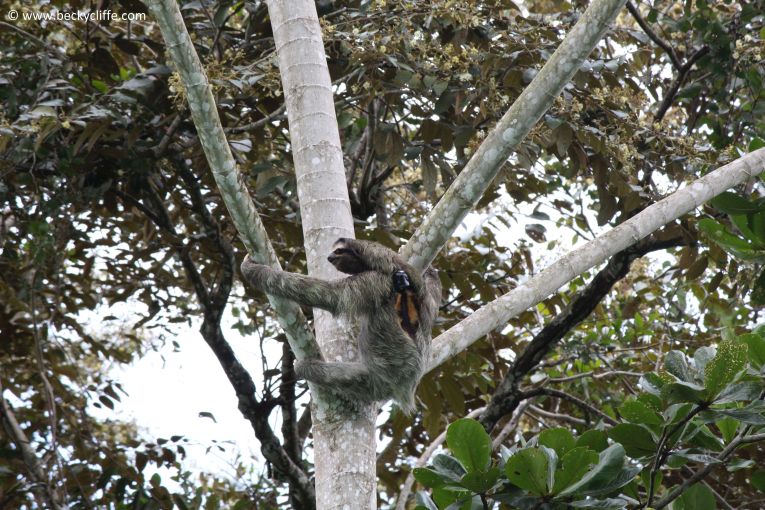Earth Times often review the sloth situation, slow and vulnerable as the species are. Rebecca N. Cliffe and her colleagues from Swansea University, the Swansea Lab. for Animal Movement and the Sloth Sanctuary of Costa Rica have investigated a mechanical problem the animal has in the Royal Society Biology Letters' - Mitigating the squash effect: sloths breathe easily upside down.
Being upside down for much of their lives, the lungs are bound to be weighed upon by the abdominal contents and the food they have eaten. Ventilation rates for both wild and captive animals of the 3-toed species, Bradypus variegatus, showed how energy expenditure could be reduced. The sloth is notorious for its low metabolic rate and its diet of low energy leaves, giving us the name for human laziness!
Living in tropical forest, warm-blooded sloths need to expend very little energy on maintaining their temperature. Dissected animals, which had died naturally, were found to have many fibrous "adhesions" holding the liver and the glandular stomach above the lungs, connected to the lower ribs.
They also held the abdominal contents together. With a mean measured lung capacity of 123 ml per kg and a ventilation rate between 6 and 108 breaths per minute, the use of the adhesions seem to be able to save the sloth between 0.8 and 1.5% of the energy needed for breathing. The researchers found that an upside down sloth would have to use between 6.9 and 12.8% more energy than when upright, if it had no adhesive fibres present, as in any other mammal such as the dog. Fortunately, sloths can save these vital percentages in their very limited energy budget!
2-toed sloths also have these adhesions and behave in similar ways, so their use to help out the lungs would seem to be obvious. In all species, they occur near the insertion of diaphragm muscles in such a position that they can relieve the lungs from any pressure when the sloth hangs at certain angles.
We must therefore congratulate the sloth race for their ability to hold so much urine and faeces, keep their abdomen at 32% of their mass, and only come down from the trees once a week to empty their waste! To be able to use so little energy restricts their musculature, but they need to move less because of their prime positioning within the branches. The authors must be congratulated on resolving such a difficult problem, with even more obscure calculations. We area agog at their wonderful effort, and the lack of it from the Bradypus!










